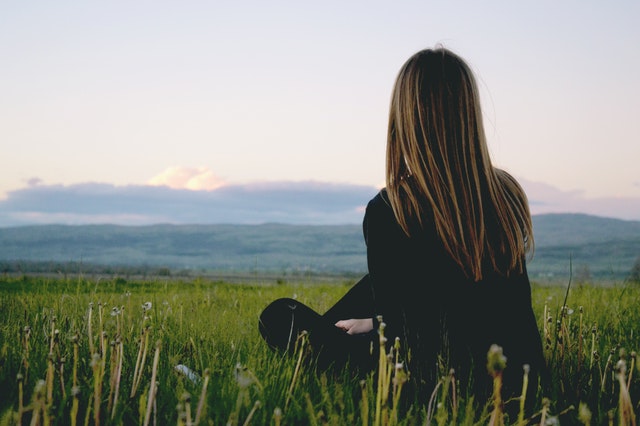WHY I CHOSE TO BIRTH MY CHILDREN AT HOME.
/As a home birthed baby of the early 80’s, I have the sepia-tone proof that my mom and dad brought me calmly into this far-out world. In their four-poster bed, my mom is reclined against the embrace of my shirtless, long haired dad. He is smiling, leaning in towards her cheek to give words of encouragement. Eyes closed, she is laboring, adorned in an array of patterned blankets and knee-high socks. A midwife, her expression both relaxed and intent, is curled into the space between my mom's exposed thighs. This nest of support, wisdom, and trust exudes what birth can be, and what I assumed it always was.
Fifteen years later, my baby sister’s birth was something else all together. My mom chose to keep this life inside her, even as her own health began to decline. I stood vigil beside my birthing mom, in place of a bygone lover, wishing I could crawl in bed beside her. The blue hospital gown haphazardly covered her cinched waist where an electronic fetal monitor held her. I ached for the comfort in that old photo. And, as if she knew the struggles that awaited her on the outside, Mary Jo fought to remain in the womb. A pair of forceps and a vacuum extractor could not convince her otherwise. At last they clutched her tiny wet body from the parted abdomen of my anxious and exhausted mom.
But life prevails under many different births, and soon we were at home with our new, healthy baby. MJ’s infant existence provided me with early access to my “maternal gut feelings.” I swooned over the sweet, warm smell of cradle-cap concealed beneath measly strands of her black hair. Her body nestled into the breast of my mother as I watched completely unabashed; the grunts and suckles, her out stretched fingers seemed in search of the world’s compassion. I filled the tiny wrinkled palm with my own giant finger and vowed to protect her from anything.
The next year came and my mom asked me to help her while MJ got vaccinated. Once in the doctor’s office, my mother and I had to forcefully restrain her frantic body as she thrashed and wailed under the needle. Afterwards, we huddled in the hall, her spent body squeezed between us as we sobbed. I knew we were protecting her from illness, but I felt a moral conflict about the way it was done.
MJ grew during the course of hundreds of pancake breakfasts, and repeat Disney movies on VHS. We painted curly mustaches on one another with watercolor paints and took long walks in our neighborhood, just the two of us, her tiny legs leading the way. The nights passed with my mom at work. MJ and I would pace back and forth together during her marathon cries, pink-blanky mashed between us as we both yearned that mom would return home from her evening job. Each day was filled with decisions that I had no idea I was so thoroughly involved in making for her. As a sixteen year old, I did my best.
A decade later, I was pregnant with my first baby. I recognized right away what ‘felt’ right to me. But in the actual realm of motherhood, I couldn’t ‘feel’ my way through all the decisions; I had to ‘know.’ I was pre-internet during my pregnancy and relied on a fat file of photocopied paperwork on vaccinations. This sat on my left, a dictionary on my right, and a slowly protruding belly between the two.
Like many young pregnant women, I was suddenly isolated from my previous social life. I filled the vacancy of company with writings by Lamaze, Bradley, and Ina May Gaskin. I marveled over the anatomy of a reproductive system that I always had folded neatly inside me.
As my body continued to change, I gave myself permission to embrace my skin and bones for the first time in my life. If I were fortunate enough to have a low-risk birth, I would let my body lead and make every attempt I could to birth without interventions.
At three months pregnant, I held my best friend’s hand as she labored in the hospital. I witnessed the hypodermic needle as it was inserted into her spine. Intrigued, I watched as the pains of labor faded from her face. We spent the next hour watching the infant fetal monitor together, chatting with the nurses about her stronger contractions and happily awaiting the arrival of her son. I realized her body would still do what it needed to do, regardless of the epidural.
Just then the doctor came in to check her progress. She was given a time limit in response to her ruptured membranes. Pitocin, more pain reliever, and eventually transition was complete. We supported her lifeless legs so she could begin pushing at the doctor’s command. I panicked as she refused his orders to push. She asked for more time, and was answered with his gloved hands, physically applying pressure to her perineum, forcing her to push anyway. She pleaded for him to stop. As he refused, I watched her use every ounce of the strength she had left in her numb legs to shove him away. I was quickly escorted from the room.
Respectively, I know of births that were the embodiment of calm and nurturing, and unfolded under the care of a hospital. I am well aware that emergencies require doctors and that sometimes all the reading, training, and support that a person can obtain on the journey to motherhood, won’t stop life from unraveling.
My own four home births have provided me with a knowledge and gratitude for two things in particular:
1) My body never blocked me from having the birth that I sought. I knew what to expect of my body, and it (literally) delivered. I have also shared the moment of disillusionment with friends who had their birth plans rattled. And, after some tears, they rose to the challenge by embracing those difficulties, later even speaking on behalf of other mothers who may have to birth with unchartered complications. Both of these births are “successful” and abundant in blessings.
2) During the labor and birth of my first baby, I was vocal about who I needed beside me at the birth pool. To my great pleasure, these people were there. And the ones that were not there, my in-laws for example, sat in their truck outside the apartment, perhaps with less faith for what I was trying to do, but never with a lack of support for the individual decisions that my husband and I had made. They waited, and even if they weren’t in the same room at that moment, they stood beside our choices. That is a trust that I hope to give my own children when differences of opinions arise. Without the people in my life making space for me as a birthing woman, respecting what I wanted to do with my body, and lifting me (literally, my dear husband’s strong, tired arms) up so that I could confidently give birth.
I am always enraptured over an individual woman’s birth story. Sharing the triumphs and unresolved difficulties of labor and birth is an empowering action that can lie dormant at the core of each mother. By listening and encouraging one another, birth stories can blossom into dialogues that help us navigate who we are and who we want to be, not only promoting other woman to find out what they want from their birth, but ultimately identifying what they need and want from their lives, as well.
-Emily












